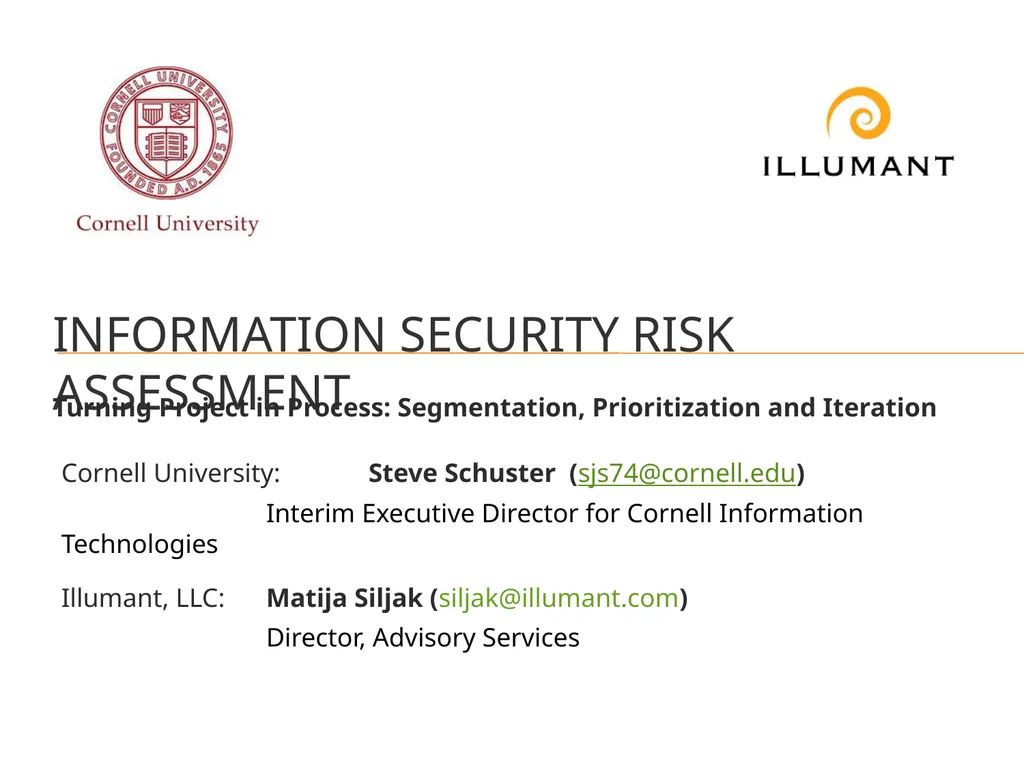
Information SECURITY Risk Assessment Turning
Author: alexa-scheidler | Published: 2025-06-27
Description: Information SECURITY Risk Assessment Turning Project in Process: Segmentation, Prioritization and Iteration Cornell University: Steve Schuster (sjs74cornell.edu) Interim Executive Director for Cornell Information Technologies Illumant,
Download Presentation
Download the PPT/PDF: Download
Transcript:
Loading transcript…